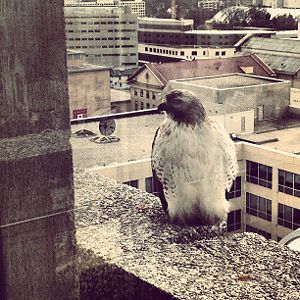Geometry and Topology Seminar 2019-2020: Difference between revisions
Jump to navigation
Jump to search
No edit summary |
No edit summary |
||
| Line 1: | Line 1: | ||
The [[Geometry and Topology]] seminar meets in room 901 of Van Vleck Hall on Fridays from 1:20pm - 2:10pm. | The [[Geometry and Topology]] seminar meets in room 901 of Van Vleck Hall on Fridays from 1:20pm - 2:10pm. | ||
<br> | <br> | ||
For more information, contact [http://www.math.wisc.edu/~ | For more information, contact [http://www.math.wisc.edu/~dymarz Tullia Dymarz]. | ||
[[Image:Hawk.jpg|thumb|300px]] | [[Image:Hawk.jpg|thumb|300px]] | ||
| Line 29: | Line 29: | ||
== | |||
== Fall 2014== | |||
| Line 38: | Line 40: | ||
!align="left" | host(s) | !align="left" | host(s) | ||
|- | |- | ||
| | |September 3 | ||
| | | | ||
| | | | ||
| | | | ||
|- | |- | ||
| | |September 11 | ||
| | | | ||
| | | | ||
| | | | ||
|- | |- | ||
| | |September 18 | ||
| | | | ||
| | | | ||
| | | | ||
|- | |- | ||
| | |September 25 | ||
| | |||
| | |||
| | | | ||
| | | | ||
|- | |- | ||
| | |October 2 | ||
| | | | ||
| | | | ||
| | | | ||
|- | |- | ||
| | |October 9 | ||
|[http://math.uchicago.edu/~akwalker/ Alden Walker] (UChicago) | |||
|[[#Alden Walker (UChicago)|''Roots, Schottky Semigroups, and a proof of Bandt's Conjecture'']] | |||
|[[# | |||
|[http://www.math.wisc.edu/~dymarz/ Dymarz] | |[http://www.math.wisc.edu/~dymarz/ Dymarz] | ||
|- | |- | ||
| | |October 16 | ||
| | | | ||
| | | | ||
| | | | ||
|- | |- | ||
| | |October 23 | ||
| [https://www.math.toronto.edu/cms/izosimov-anton/ Anton Izosimov] (University of Toronto) | |||
|[[# | | [[#Anton Izosimov (University of Toronto)|''TBA'']] | ||
|[http://www.math.wisc.edu/~ | | [http://www.math.wisc.edu/~maribeff/ Mari-Beffa] | ||
|- | |- | ||
|October 30 | |||
| | | | ||
| | | | ||
| | | | ||
|- | |- | ||
| | |November 6 | ||
| | | | ||
| | | | ||
| | | | ||
|- | |- | ||
| | |November 13 | ||
| | | | ||
| | | | ||
| | | | ||
|- | |- | ||
|November 20 | |||
|November | |||
| | | | ||
| | | | ||
| Line 249: | Line 105: | ||
| | | | ||
|- | |- | ||
|December 4 | |December 4 | ||
| | | | ||
| | | | ||
| | | | ||
|- | |- | ||
|December | |December 11 | ||
| | | | ||
| | | | ||
| | | | ||
| Line 269: | Line 120: | ||
== Fall Abstracts == | == Fall Abstracts == | ||
=== | ===Anton Izosimov=== | ||
'' | ''TBA'' | ||
TBA | |||
== Archive of past Geometry seminars == | == Archive of past Geometry seminars == | ||
Revision as of 14:14, 28 June 2015
The Geometry and Topology seminar meets in room 901 of Van Vleck Hall on Fridays from 1:20pm - 2:10pm.
For more information, contact Tullia Dymarz.
Summer 2015
| date | speaker | title | host(s) |
|---|---|---|---|
| June 23 at 2pm in Van Vleck 901 | David Epstein (Warwick) | Splines and manifolds. | Hirsch |
Summer Abstracts
David Epstein (Warwick)
Splines and manifolds.
Fall 2014
| date | speaker | title | host(s) |
|---|---|---|---|
| September 3 | |||
| September 11 | |||
| September 18 | |||
| September 25 | |||
| October 2 | |||
| October 9 | Alden Walker (UChicago) | Roots, Schottky Semigroups, and a proof of Bandt's Conjecture | Dymarz |
| October 16 | |||
| October 23 | Anton Izosimov (University of Toronto) | TBA | Mari-Beffa |
| October 30 | |||
| November 6 | |||
| November 13 | |||
| November 20 | |||
| Thanksgiving Recess | |||
| December 4 | |||
| December 11 | |||
Fall Abstracts
Anton Izosimov
TBA
TBA
Archive of past Geometry seminars
2014-2015: Geometry_and_Topology_Seminar_2014-2015
2013-2014: Geometry_and_Topology_Seminar_2013-2014
2012-2013: Geometry_and_Topology_Seminar_2012-2013
2011-2012: Geometry_and_Topology_Seminar_2011-2012
2010: Fall-2010-Geometry-Topology
